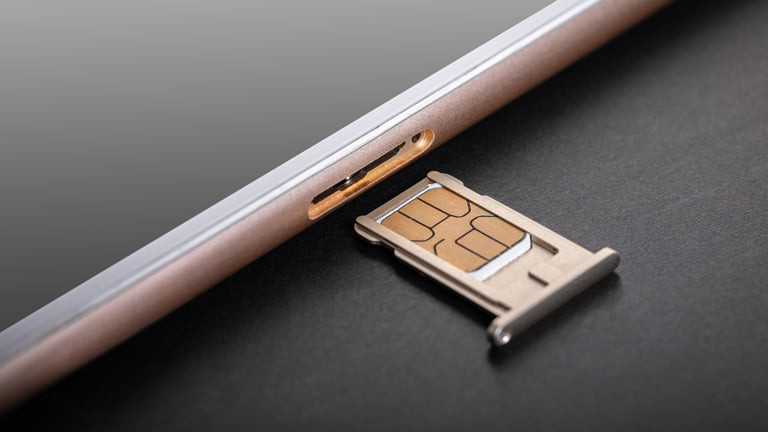SIM cards are integral to our smartphones, acting as the bridge connecting us to cellular networks. You’ve likely encountered this small chip when setting up a new phone or switching carriers. While SIM cards enable essential functions like calls, texts, and internet access, a common question arises: Does A Sim Card Store Photos? Many users are uncertain about the extent of SIM card storage, particularly concerning precious photos. This article will clarify what information a SIM card actually holds and dispel any myths about photo storage on these tiny modules.
Core Data on a SIM Card: What’s Actually Stored
The primary function of a SIM card is to securely identify you as a subscriber to your mobile network. Therefore, the essential data stored on a SIM card is geared towards authentication and network connectivity. This includes:
- Phone Number: Your mobile phone number is directly linked to your SIM card, allowing the network to route calls and messages to you.
- International Mobile Subscriber Identity (IMSI): This unique number identifies your subscription within the mobile network. It’s crucial for network authentication and billing.
- Integrated Circuit Card Identifier (ICCID): This is the SIM card’s serial number, essentially its unique identification. You can often find this number printed on the SIM card itself or within your phone’s settings.
- Authentication Key (Ki): A secret key stored on the SIM card and within the network’s systems. This key is used to authenticate your device when it connects to the cellular network, ensuring secure access.
- Mobile Country Code (MCC) and Mobile Network Code (MNC): These codes identify the country and specific mobile network operator you are connected to.
 A traveler is trying to switch a SIM card on smartphone while thinking of what is stored on a SIM card
A traveler is trying to switch a SIM card on smartphone while thinking of what is stored on a SIM card
These pieces of information are fundamental for your phone to operate on a mobile network. They are the core elements that define your subscription and allow for secure communication services.
Beyond the Essentials: Additional SIM Card Storage
While primarily for network identification, SIM cards can also store a limited amount of other data, though this is becoming less common with modern smartphones:
- Contacts: Historically, SIM cards were used to store contact information. While still possible, most modern smartphones default to storing contacts in the phone’s internal storage or cloud services like Google or iCloud. SIM cards typically have a limited capacity for contacts, often around 250 entries.
- Text Messages (SMS and MMS): Similar to contacts, SIM cards can store text messages. However, with the increasing storage capacity of phones and the popularity of messaging apps, text messages are more often stored on the device itself or backed up to cloud services. SIM cards generally have a small capacity for text messages, potentially around 500 SMS messages.
- Service Dialing Numbers (SDN): These are quick dial numbers for frequently used services, which can be stored on the SIM card.
- Short Message Service Center (SMSC): This number is needed to send text messages and is often pre-programmed on the SIM card by the network provider.
- Value-Added Services (VAS): Information related to additional services offered by the network provider might be stored.
- Network Settings: In some cases, basic network preferences or voicemail numbers might be stored on the SIM card, though this is less common now.
It’s crucial to understand that the storage capacity of a SIM card is quite limited, typically up to 256KB. This is a tiny amount of storage compared to the gigabytes or terabytes available on modern phone storage or cloud services.
Photos, Videos, and Apps: Not on Your SIM Card
Now, to directly address the key question: does a SIM card store photos? The answer is definitively no. SIM cards are not designed for storing photos, videos, applications, or large media files. These types of data are stored in different locations:
- Photos and Videos: These are primarily stored in your phone’s internal storage. Modern smartphones come with significant internal storage (e.g., 128GB, 256GB, 512GB, or even 1TB) specifically for media files, apps, and other user data. Additionally, photos and videos can be stored on external SD cards (if your phone supports them) or backed up to cloud storage services like Google Photos, iCloud Photos, or Dropbox.
- Apps: Applications are installed and stored in your phone’s internal storage. They require significantly more storage space than a SIM card can offer and are linked to your phone’s operating system, not your SIM card.
 A SIM card plates and a SIM card taken out of the smartphone
A SIM card plates and a SIM card taken out of the smartphone
Therefore, removing your SIM card will not result in the loss of your photos, videos, or apps. These items are stored independently of the SIM card on your phone’s memory systems or cloud backups. The SIM card is solely for network authentication and subscriber identification.
Checking Basic SIM Card Information
You can easily access some basic information stored on your SIM card through your phone’s settings.
- iPhone: Navigate to Settings > General > About. Scroll down to find the ICCID which is your SIM card’s identification number.
- Android: The process can vary slightly depending on the manufacturer. Generally, you can find it under Settings > About Phone > Status > SIM status or similar. Look for information like ICCID or SIM card status.
This allows you to verify your SIM card’s identification number and confirm that your device recognizes the SIM.
SIM Card Security: Are They Vulnerable?
While concerns about security are valid, SIM cards are designed with security in mind.
- Authentication Process: The secure authentication process using the Ki key makes it very difficult to clone a SIM card or steal data remotely.
- Hacking Risk: While theoretically possible for sophisticated attacks, SIM card hacking is not a common occurrence for average users. It’s far more likely for phones to be compromised through malware or phishing attacks targeting the device’s operating system or apps, not the SIM card directly.
- Physical Security: The main physical security concern is losing your SIM card, which could potentially allow someone to make calls or use data on your account if they bypass your phone’s security. However, modern phones have PIN locks and other security measures to prevent unauthorized use even if the SIM is removed.
It’s always wise to keep your phone and SIM card physically secure and be cautious about potential phishing or malware threats to your device itself.
eSIM: A Modern Evolution
As technology advances, eSIM (embedded SIM) is emerging as a modern alternative to traditional physical SIM cards.
- Embedded Technology: eSIMs are built directly into your phone’s hardware, eliminating the need for a physical card.
- Remote Activation: eSIMs can be activated and reprogrammed digitally, without physically swapping cards. This is incredibly convenient for travelers or those who frequently switch carriers.
- Multiple Profiles: eSIMs can often store multiple carrier profiles, allowing you to switch between different mobile plans without changing SIMs.
eSIM technology is becoming increasingly popular and is supported by many newer smartphones and mobile carriers, offering a more streamlined and flexible approach to mobile connectivity.
Final Thoughts
In summary, while SIM cards are essential for connecting to mobile networks and store crucial subscriber information like your phone number and network identification details, they do not store photos. Photos, videos, apps, and other media are stored on your phone’s internal storage, external SD card, or cloud services. Understanding the distinction between SIM card functions and phone storage is key to managing your mobile data and device security. As technology evolves, eSIMs are presenting a forward-thinking alternative to traditional SIM cards, offering enhanced convenience and flexibility in mobile connectivity.
